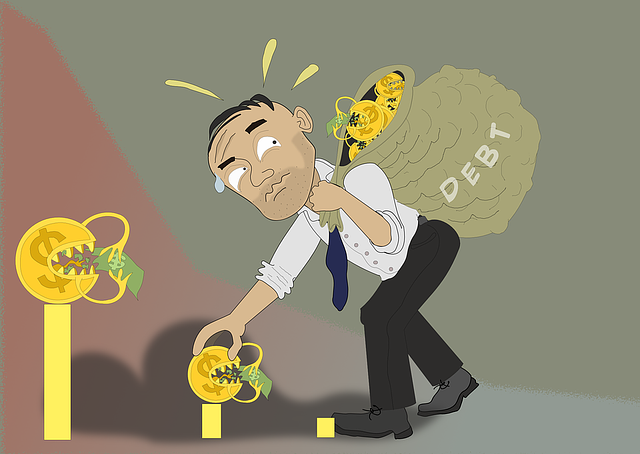Unsecured debt consolidation loans offer a risk-free way to combine high-interest debts with simplified repayment. Ideal for those with strong credit, but less favorable terms available for less-than-perfect credit histories. Key benefits include lower interest rates, streamlined payments, and savings on administrative costs. A strategic approach involves prioritizing high-interest debts while using consolidation to reduce overall rates and faster debt elimination. Maintaining financial stability post-consolidation requires a strict budget that balances expenses, savings, and debt repayment.
Struggling with multiple debts? Consider unsecured debt consolidation loans as a strategic solution to simplify repayment and reduce overall debt. This comprehensive guide explores the benefits of consolidating various debts, from improved cash flow to lower interest rates. We’ll walk you through effective loan selection strategies, provide tips for creating a successful repayment plan, and offer advice on maintaining financial stability post-consolidation.
- Understanding Unsecured Debt Consolidation Loans
- Benefits of Consolidating Multiple Debts
- Strategies for Effective Loan Selection
- Creating a Repayment Plan for Success
- Tips to Maintain Financial Stability After Consolidation
Understanding Unsecured Debt Consolidation Loans

Unsecured debt consolidation loans offer a unique opportunity for individuals struggling with multiple high-interest debts. Unlike secured loans that require collateral, unsecured options provide funding based solely on your creditworthiness and income. This means if you’re able to get approved for an unsecured loan, you won’t risk losing valuable assets like your home or car. When comparing debt consolidation loans, it’s essential to consider both the interest rates offered and the terms of repayment. Unsecured debt consolidation loans typically have higher interest rates compared to secured options, but they also provide the advantage of not having to put up collateral.
Evaluating whether unsecured debt consolidation is the better choice depends on your financial situation. If you have a strong credit score and can secure a competitive interest rate, an unsecured loan could simplify your repayment process by combining multiple debts into one manageable payment. However, if your credit history is less than ideal or you’re concerned about potential financial setbacks, secured loans might be a more conservative route to consider. Comparing the terms and conditions of various debt consolidation loans will help guide your decision in finding the best solution for reducing your overall debt burden.
Benefits of Consolidating Multiple Debts

Debt consolidation is a powerful strategy to simplify and streamline repayment, especially when dealing with multiple debts. One of the primary advantages is the ability to combine various loans into a single, more manageable payment. This approach significantly reduces the administrative burden of managing several lenders and due dates, making it easier for borrowers to keep track of their payments.
Additionally, unsecured debt consolidation loans can offer lower interest rates compared to individual debts, saving individuals substantial amounts in the long run. By consolidating, you may also gain access to extended repayment terms, which can further reduce monthly outgoings and provide a clearer path to financial freedom. This is particularly beneficial for those with high-interest credit card debts or variable loans, offering a more stable and affordable repayment schedule.
Strategies for Effective Loan Selection

When creating a strategic consolidation plan to reduce overall debt, careful selection of loans is paramount. The first step involves distinguishing between secured and unsecured debt consolidation loans. Unsecured debts, such as credit card balances or personal loans, offer greater flexibility as they don’t require collateral. This type of loan can be particularly beneficial for those looking to simplify payments through debt consolidation services, as it allows for a single, manageable payment with potentially lower interest rates.
Additionally, understanding unsecured loan limits for debt payoff is crucial. While unsecured loans provide convenience and accessibility, they often come with higher borrowing limits designed for short-term relief rather than complete debt eradication. Strategists recommend focusing on paying off high-interest debts first while using consolidation to lower overall interest rates. This approach ensures that even with similar monthly payments, you’re devoting more funds towards reducing principal balances, helping you get out of debt faster with unsecured consolidation.
Creating a Repayment Plan for Success

Creating a repayment plan is a crucial step toward achieving success in debt consolidation. It’s essential to develop a strategy that addresses your unique financial situation and prioritizes paying off debts effectively. One effective approach involves focusing on unsecured debt consolidation loans, which offer the advantage of lower interest rates compared to other forms of debt. By consolidating your unsecured debts, you can streamline your repayment process and save money in interest charges.
A well-structured plan typically involves listing all your existing debts, calculating their total amount, and then determining a feasible monthly payment that aligns with your budget. Debt consolidation solutions without equity are particularly appealing as they don’t require collateral, making them accessible to more individuals. This method allows you to consolidate multiple debts into a single loan, simplifying the repayment process and potentially securing lower interest rates on your existing debts.
Tips to Maintain Financial Stability After Consolidation

After successfully implementing a debt consolidation plan, it’s crucial to maintain financial stability and avoid falling back into debt. Firstly, focus on creating and adhering to a strict budget that allocates funds for essential expenses and savings while prioritizing the repayment of consolidated debts. This ensures your financial responsibilities are managed efficiently, and you’re making consistent progress towards becoming debt-free.
Additionally, explore debt relief programs offering unsecured loans, which can provide flexibility in managing medical debts or other unforeseen financial burdens. These options allow for more manoeuvrability compared to traditional secured loans. Remember that fixing medical debts with flexible unsecured loans is a strategic move, but it’s essential to weigh the interest rates and terms to ensure you’re still on track for long-term financial health.
Unsecured debt consolidation loans offer a strategic path to financial stability by simplifying multiple debts into one manageable repayment. By understanding the benefits of consolidation, selecting suitable loans wisely, and creating a disciplined repayment plan, individuals can effectively reduce their overall debt burden. Additionally, maintaining financial discipline post-consolidation is crucial for long-term success. Embracing these strategies equips folks with the tools to navigate their financial landscape more efficiently.
